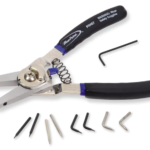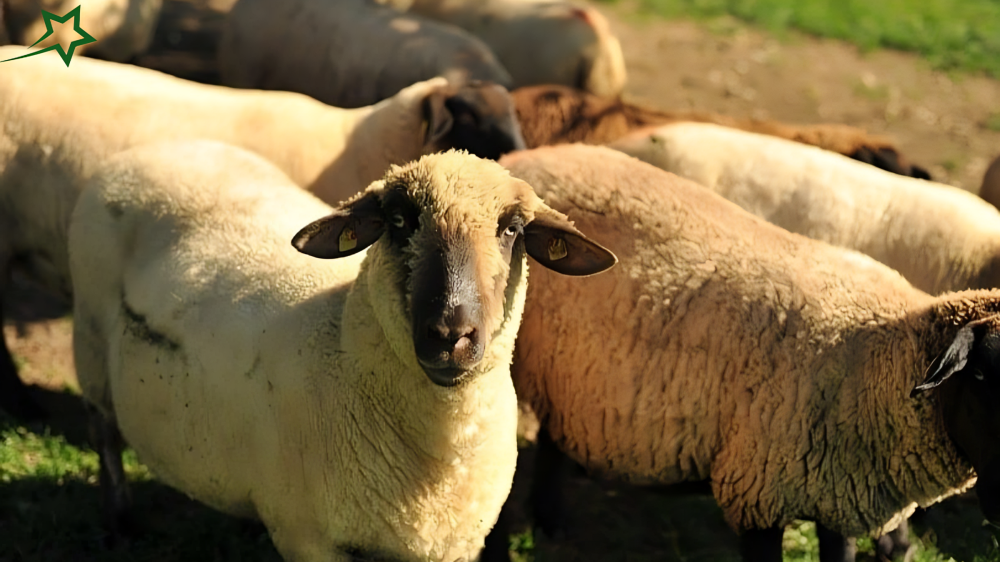Suffolk Sheep are one of the most well-known and widely raised sheep breeds in the world. Renowned for their distinctive markings, excellent meat quality, and ability to thrive in various climates, Suffolk sheep have become a popular choice for farmers. However, one of the most striking features of this breed is its unique and recognizable markings. These distinctive markings are not just a point of interest but also serve a functional role in the breed’s identification, health, and even breeding programs. In this comprehensive guide, we will delve into the various aspects of Suffolk Sheep distinctive markings, exploring their significance, how to recognize them, and the impact they have on Suffolk Sheep farming.
What Are Suffolk Sheep Distinctive Markings?
The Suffolk Sheep distinctive markings are one of the key features that make this breed stand out from other sheep breeds. These markings primarily consist of a black face, black legs, and a white body, which is often noted for its clean and well-groomed appearance. The black face and legs give the Suffolk Sheep its characteristic appearance, often making it easily recognizable in a flock. This black coloration is a result of the breed’s genetics, which pass down these traits through generations, creating a uniform appearance among the Suffolk Sheep breed.
The Suffolk Sheep distinctive markings can sometimes appear more or less pronounced depending on the individual sheep. Some may have deeper black coloring on the face and legs, while others may exhibit lighter shades. However, the general appearance of a Suffolk Sheep remains consistent, with the darker areas on the face and legs contrasting against the lighter, often pure white wool.
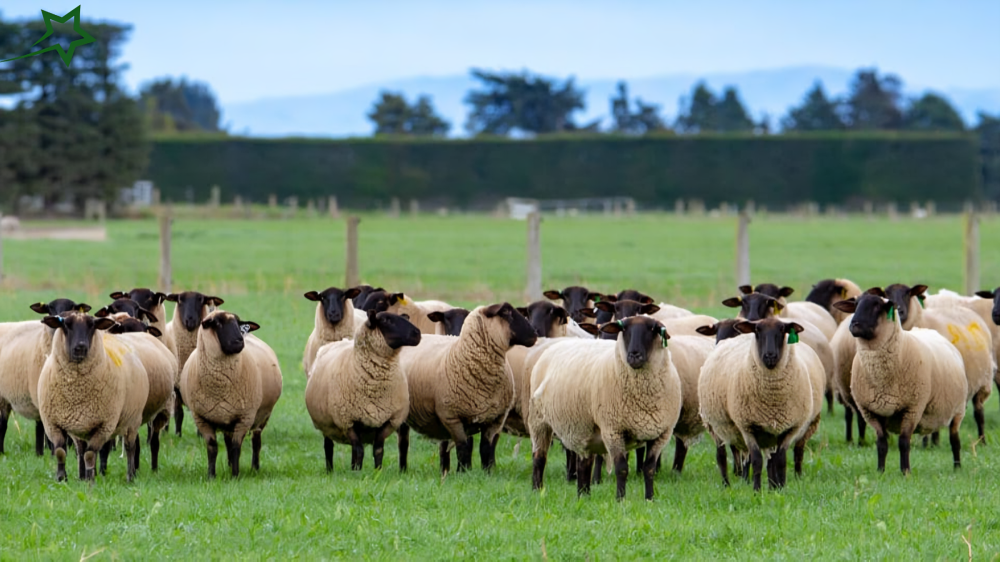
The History and Origin of Suffolk Sheep
To fully appreciate the Suffolk Sheep distinctive markings, it’s important to understand the breed’s origins. Suffolk Sheep originated in the county of Suffolk, located in East Anglia, England, in the early 19th century. The breed was developed by crossing the Southdown and Norfolk Horned breeds, with the goal of producing a sheep that was ideal for both meat production and wool production.
The result was a breed that not only excelled in terms of meat quality but also developed a unique set of physical characteristics, including the distinctive black face and legs. These Suffolk Sheep distinctive markings were not just aesthetic but also helped define the breed as a high-quality sheep in both appearance and performance. Over time, the breed became one of the most widely recognized and sought-after in the world.
Why Are Suffolk Sheep Distinctive Markings Important?
The Suffolk Sheep distinctive markings serve more than just an ornamental purpose. These markings are crucial in several ways, particularly in the context of farming, breeding, and identification.
Identification and Record-Keeping
The distinctive black face and legs of Suffolk sheep make them easy to identify in a flock, which is especially important for farmers managing large herds. Being able to quickly spot individual sheep can be vital for health monitoring, breeding decisions, and day-to-day management. These Suffolk Sheep distinctive markings also help farmers maintain accurate records, ensuring that the right sheep are selected for specific breeding programs or tasks.
Health Monitoring and Breeding Selection
Suffolk sheep are bred for certain physical traits that are passed down through their markings. For instance, the black coloration of the face and legs is a dominant trait that breeders look for when selecting breeding pairs. These distinctive markings help ensure that desirable traits are maintained across generations, contributing to the consistency of the breed.
Furthermore, Suffolk Sheep markings can also be indicators of the sheep’s health. For example, if the black markings appear faded or discolored, it could be a sign of nutritional deficiencies or other health issues. By paying close attention to the Suffolk Sheep distinctive markings, farmers can gain insights into the overall well-being of their flock.
Breed Standards and Quality Control
For farmers participating in shows or selling their sheep for breeding purposes, adhering to breed standards is crucial. The Suffolk Sheep distinctive markings are an essential part of the breed standard. A Suffolk Sheep that deviates significantly from the typical black and white coloration may not meet the quality expectations set by breed organizations. Therefore, understanding and maintaining these distinctive markings is important for breeders who wish to uphold the integrity and reputation of the Suffolk Sheep breed.
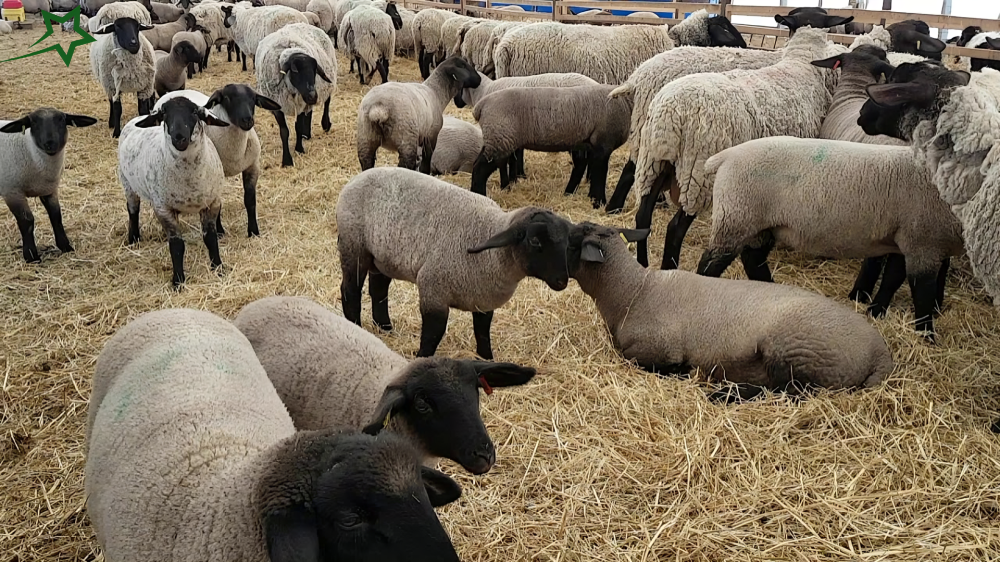
Key Features of Suffolk Sheep Distinctive Markings
When it comes to Suffolk Sheep distinctive markings, several key features stand out. These characteristics are often used to identify the breed, and they are crucial for farmers in recognizing high-quality Suffolk sheep. Let’s break down the main physical markers that define this breed:
Black Face
The most iconic feature of the Suffolk Sheep is its black face. This black coloring extends from the forehead down to the muzzle, creating a sharp contrast against the white wool that covers the rest of the body. The black face is a distinguishing characteristic that sets the Suffolk Sheep apart from other breeds, which may have lighter or less defined facial markings.
The black face is not only a visual marker but also a result of specific genetic traits. It is essential that breeders maintain this characteristic in order to preserve the breed’s distinctive appearance. However, the degree of blackness can vary from sheep to sheep. Some Suffolk sheep may have a more solid black face, while others may exhibit some light patches or faded areas.
Black Legs
Another defining feature of the Suffolk Sheep is its black legs. These legs, which are free from wool, are typically dark, creating a stark contrast with the sheep’s white body. The black legs often extend from the hooves up to the knee or hock, depending on the individual sheep. These Suffolk Sheep distinctive markings help further emphasize the breed’s unique appearance.
The black legs are part of the breed’s genetic makeup and are passed down through generations. Like the black face, the black legs help farmers identify Suffolk sheep quickly and efficiently. These markings also contribute to the breed’s strong and robust physical appearance, a feature that is highly valued by farmers.
White Wool
The majority of the Suffolk sheep’s body is covered in a thick layer of white wool. This clean, white wool is prized for its quality and is one of the reasons Suffolk sheeps are raised not only for meat but also for wool production. The combination of white wool with a black face and legs gives the Suffolk Sheep its trademark appearance.
White wool is not only an aesthetic feature but also an important aspect of the sheep’s overall health. Suffolk sheep are known for their ability to grow high-quality wool that can be used for a range of textile products. Farmers pay close attention to the wool’s quality, as it can significantly impact the sheep’s value in the marketplace.
The Smooth, Well-Defined Markings
One of the most notable aspects of the Suffolk Sheep distinctive markings is how well-defined they are. The sharp contrast between the black face and legs and the white body creates a clean and striking visual appearance. These clear and smooth markings are a hallmark of the breed, and they are highly prized by farmers, breeders, and show enthusiasts alike. The definition of the black markings indicates the health and genetic strength of the Suffolk Sheep, which is why it is essential for farmers to keep an eye on the integrity of these features.
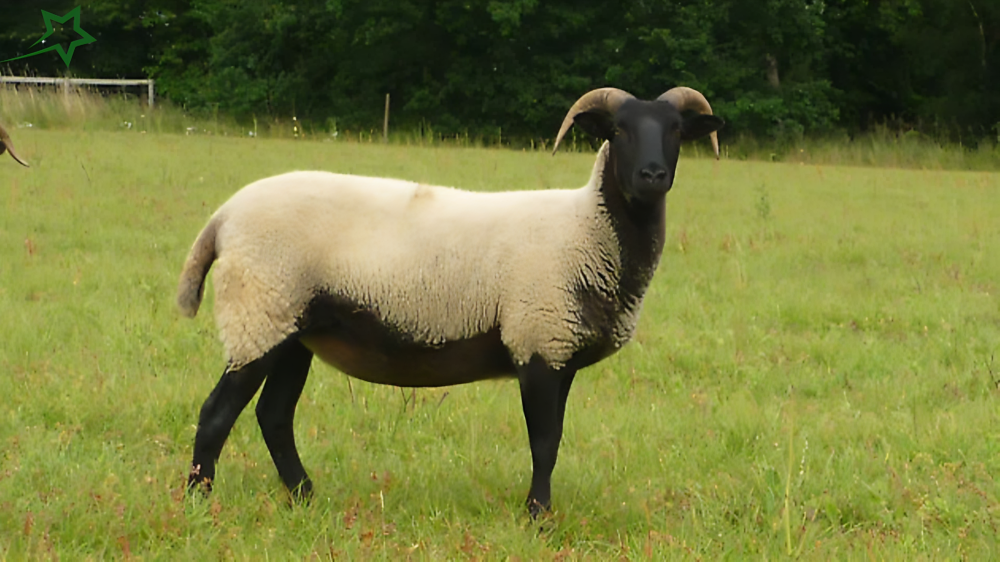
How to Care for Suffolk Sheep and Maintain Their Distinctive Markings
While the Suffolk Sheep distinctive markings are genetically determined, maintaining their health and appearance requires proper care and attention. To ensure that the black face, black legs, and white wool stay vibrant and healthy, farmers must provide adequate nutrition, shelter, and healthcare. Here are some key tips for caring for Suffolk Sheep:
Nutrition
A balanced diet is essential for maintaining the health and vibrancy of the Suffolk Sheep distinctive markings. Suffolk sheep require a diet rich in nutrients, including high-quality forage, grains, and minerals. Proper nutrition not only helps maintain the health of the sheep but also ensures that the black face and legs retain their deep color and the white wool remains clean and bright.
Shelter and Living Conditions
Providing proper shelter is important to protect Suffolk sheep from extreme weather conditions that could affect their health and appearance. Excessive sun exposure can cause the black markings to fade, while harsh cold weather can damage their wool. Farmers should ensure that Suffolk Sheep have access to clean, dry, and well-ventilated shelters to prevent health issues.
Regular Grooming
Regular grooming is essential to maintain the quality of the wool and prevent skin issues that could affect the distinctive markings. Suffolk sheep are known for their clean, white wool, but this requires upkeep. Farmers should brush the sheep regularly to remove debris, dirt, and tangles, ensuring that the distinctive markings remain sharp and well-defined.
Health Monitoring
Routine health checks are crucial for ensuring that the Suffolk Sheep remains in optimal condition. Farmers should regularly inspect the sheep for signs of parasites, infections, or other health problems that could affect their appearance. Any changes in the Suffolk Sheep distinctive markings, such as fading or discoloration, should be addressed promptly, as they could be indicative of underlying health issues.
More: Reddit
Conclusion
Suffolk Sheep are an iconic breed, celebrated for their distinctive markings—the black face, black legs, and white body—that set them apart from other sheep breeds. These markings not only make the Suffolk Sheep easily recognizable but also play a crucial role in identification, breeding, and health monitoring. By understanding and maintaining these Suffolk Sheep distinctive markings, farmers can ensure the breed’s continued success and preserve its unique qualities for future generations. Whether you are a seasoned sheep farmer or just starting out, paying attention to the distinct features of Suffolk Sheep is key to managing a successful flock.




